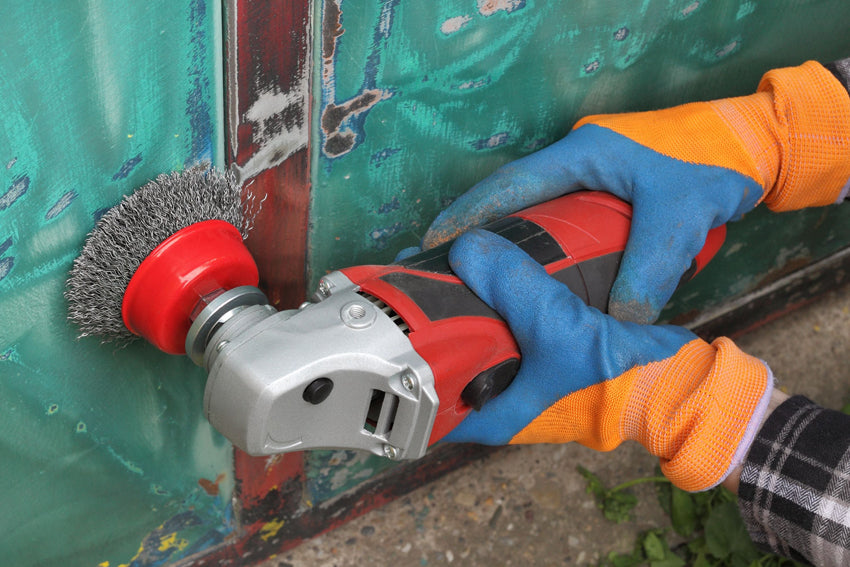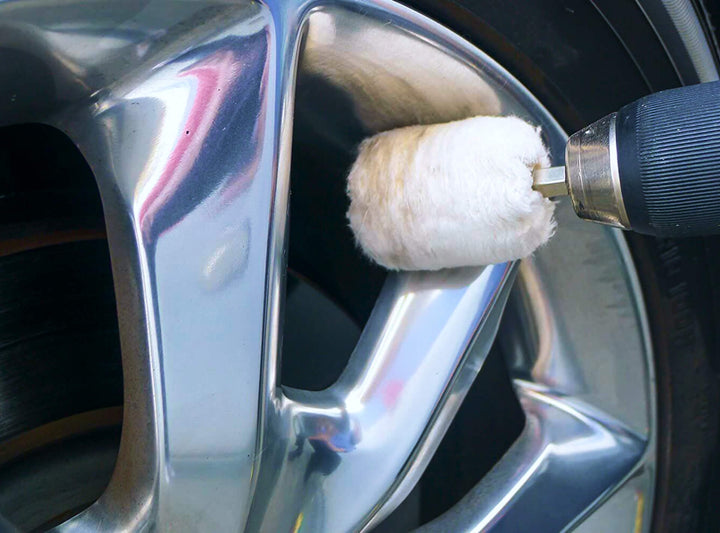5 Angle Grinder Discs & Attachments you Should Absolutely Get!
We all know the angle grinder, its a power tool with a spinning disc at an incredible speed to grind and cut through metal. But did you know that the angle grinder can do a lot more than that?
If your job or hobby involves any type of material fabrication or surface finishing, then the angle grinder is the power tool that you’re looking for.
An angle grinder has many versatile functions, available in both battery-equipped (cordless) and power cord versions, this heavy-duty power tool possesses the ability to cut, grind, polish, smooth, and sharpen a wide variety of materials including iron, steel, brass, marble, wood, and stone.
Apart from its most common use as a grinder, there are a variety of abrasive attachments available for this power tool, designed to perform many versatile jobs and functions. You may choose the attachment depending on the material you’re working with and the function you need to perform.
Below are attachments you should know about:
Angle Grinder Wire Brush Attachments

Available in many different shapes and forms and sizes such as wire cup brushes, wire wheel brushes and end brushes. Wire brush angle grinder attachments are ideal for heavy duty cleaning, deburring, edge blending, and paint stripping. Wire wheel brush attachments with knotted and crimped wires are used for working with hard metal surfaces such as iron and stainless steel.
-
Knotted Wire Wheel Brush
With a knotted design adding maximum aggressiveness to the wires, this wire wheel brush attachment type is circular in shape to add precision to your project and to fit into corners. Used for treating hard metals such as iron, stainless steel, this attachment prepares and conditions rough surfaces through heavy duty cleaning action, deburring, and removing rust.
Designed with flexible wires, these cup brush attachments are best suited for preparing larger and wider surfaces. Less aggressive than a knotted design, crimped wire brushes result in a uniform, polished, and smoothly finished surface.
Adding the features of both cup design and knotted wire, this wire brush attachment is ideal for performing tough jobs on larger surface areas. With aggressive cleaning abilities, it is ideal for removing material deposits and contaminates such rust and oxidization.
Angle Grinder Diamond Cutting Blades

Designed specifically for working on concrete and masonry surfaces, diamond saw discs are made of hardened steel rims embedded synthetic diamond abrasives. possessing the ability to grind through the hard materials with power and precision.
Diamond cutting discs come in many different types, the most common types are continuous rim, segmented rim, and turbo rim designs. Saw blades provide a precise and finished cutting ability. these cut off discs can cut through marble, ceramic, porcelain, and granite. Which makes them ideal for tiling and other masonry work.
There are 3 different types of Diamond cutting blades:
- Continuous rim: Ideal for smooth cutting of marble, ceramic, and porcelain tiles
- Segmented blade: Best for general purpose cutting of masonry, concrete, terrazzo, and roof tiles
- Turbo blade: With efficient speed and clear-cutting abilities, ideal for cutting granite, slate, paver bricks, and concrete pipes
Angle Grinder Sanding Attachments

Angle grinders make excellent power sanding tools because of their powerful motor combined with precision and high RPM.
Sanding discs for the angle grinder are generally circular discs embedded with abrasive material. Its commonly used in the woodworking industry for leveling surfaces, carving and shaping and smoothing hard woods, and in the metal working industry to remove rust and scratches off of metal surfaces,
Here are some of the various abrasive materials you may choose from when you need to use your angle grinder as a power sanding tool
- Aluminum Oxide Sanding Discs: Best suited for sanding and polishing bronze, alloy steel, wood and fiber glass. It is advised not to use stainless steel because of its iron composition can cause light oxidization
- Zirconia Sanding Discs: Stronger than aluminum oxide and iron-free, this type is best suited to polish and sand wood, fiber glass, metal, brass, aluminum, and stainless steel. Lasting 10x more than aluminum oxide abrasives, its ideal for rough wood surfaces, grinding metals and removing burrs, Cleaning up welds and stripping paint and contaminants.
- Ceramic Sanding Discs: Efficient in terms of both sharpness and longevity, ceramic sanding discs are the most aggressive abrasive grains, best to apply for heavy-duty functions on metals including wood, metal, and stainless steel. With its coarse grits, these can be used for removing substances.
Two Common Sanding Discs Types you can buy for your Angle Grinder
- Flap Sanding Discs
Due to the strength they possess and the separated flaps of sanding material, flap discs are famous for removing hard stock efficiently as the flap design dissipates heat, which is Super Cool! (pun intended).
Attached to an angle grinder, Flap sanding wheels allows the abrasive grain to sand and grind efficiently while reducing load, lessening friction while keeping the surface reasonably cool to extend the life of the abrasive and avoid damaging and overheating the surface.
Perfect to work with stainless steel, cast iron, titanium, and hardwood.
- Ceramic Sanding Discs
These discs are the best when it comes to value for money, even though they are more expensive than zirconia and aluminum oxide initially, they last much longer and provide consistent results.
They are ideal to use with heat-sensitive materials such as stainless steel, nickel alloy, and titanium due to having less ceramic friction and cooler operation than both aluminum oxide and zirconium, since ceramic is a harder abrasive.
Angle Grinder Attachments for Buffing & Polishing

While using the angle grinder as a buffing tool is good idea but its best to be used with experienced hands, the angle grinder are very powerful and could run up to 13,000 RPM, so its advisable to use a variable speed grinder for buffing and polishing jobs.
Buffing pads for angle grinder are made from high-quality wool, famous for being wear-resistant. When you want to polish and shine your metal surfaces, the buffing wheel comes to the rescue. Attached to the power of the angle grinder, the polishing wheel is effective for metal, glass, ceramic, and wood polishing.
Angle Grinder Attachments for Stripping and Surface Preparation

Surface preparation is the essential part of finishing any project or workpiece. To prepare and condition hard surfaces with rust issues, paints and gunk build-ups, a stripping grinder wheel is a quick solution.
The poly stripping wheel is usually made from nylon and somewhat flexible with a non woven matrix design to allow a sufficient amount of air though the weave, which results in a much cooler operation so you can use your grinder at high RPM without burning out the surface.
Attached with an angle grinder provides speed and efficiency to remove contaminants from the surface without damaging it.
-
Non-Woven Abrasive Discs
Non-woven abrasive discs are essential for surface conditioning and paint jobs. they are commonly used in the autobody industry and metal fabrication facilities for finishing. It provides enough scouring power to remove even the toughest of substances like adhesives and sealers to prepare the surface for finishing.
-
Poly Stripping Discs
Poly strip wheels are rotating discs used for stripping paints, which is basically removing the paint and exposing the surface. These discs are used with angle grinders for finishing and conditioning with fast action and no damage to the original surface.
Conclusion
Whether you're finishing metal projects or cutting a tile, the angle grinder is the ideal tool for your tasks. With a powerful motor and a high RPM, its the go-to tool to take on several jobs with the right accessories and ultimate versatility.
Choose your attachments and discs to turn your angle grinder into a sander, polisher, buffer, grinder or a multi-material cutter.
















Hi! I would suggest you specify when you say ‘surface’. Are you talking wood or metal?
I do wood work, metal and ceramic. Removing rust from metal is still a challenge after 5 years of experiencing different tools. Comment specific to this would be appreciated. tks!
Leave a comment